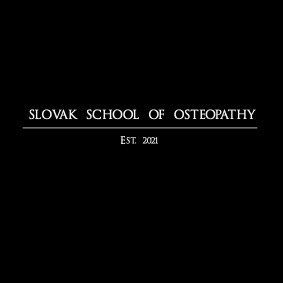Indications and contraindications of osteopathic treatment
The indication for osteopathic treatment is the presence of somatic dysfunction that is clinically significant. Clinical significance is determined using the structure-function models of osteopathic practice described in the introductory section.
Osteopathic practitioners have responsibility to diagnose and refer patients as appropriate when the patient’s condition requires therapeutic intervention, which falls outside the practitioner’s competence. Both osteopaths and osteopathic physicians need to recognize when specific approaches and techniques may be contraindicated in specific conditions.
It is important to understand that a contraindication to osteopathic manipulative treatment in one area of the body may not preclude osteopathic treatment in a different area. Likewise, a contraindication for any specific technique does not negate the appropriateness of a different type of technique in that same patient. Absolute and relative contraindications for osteopathic manipulative treatment are usually based upon the technique employed. It is the responsibility of the osteopathic practitioner to discern which types of techniques are safe and appropriate in a clinical situation.
Techniques can be categorized as direct, indirect, combined, fluid and/or reflex based(26). Direct techniques, such as muscle energy, thrust and articulatory manoeuvres, pose different risks than indirect, fluid and reflex based techniques. There is scant data published that details which techniques should be avoided in specific conditions. An understanding of the pathophysiology of the patient’s condition and the mechanism of action of the technique have been used to establish biological plausibility for the absolute and relative contraindications listed.
Contraindications
Patient refusal or absence of informed consent is an absolute contraindication to the application of any technique or treatment. Significant adverse response to prior treatment or the initiation of any technique is an absolute contraindication to the completion of that specific technique.
2.1. Direct techniques
Direct techniques may be applied specifically to a joint or non-specifically to a body area. Direct techniques engage the restrictive barrier. Direct techniques may use thrust, impulse, muscle contraction, fascial loading, or passive range of motion to achieve the tissue response. Often an area that should not be treated using a direct technique may safely and effectively be treated using an alternative technique approach, e.g., indirect, fluid or reflex based.
2.1.1. Absolute contraindications to any direct technique (systemic conditions):
- suspected bleeding disorder
- prolonged bleeding times
- anticoagulant pharmacotherapy without recent evaluation of therapeutic level.
- clotting abnormalities
- congenital or acquired connective tissue diseases that result in compromised tissue integrity
- compromised bone, tendon, ligament or joint integrity as might occur in metabolic disorders, metastatic disease, and/or rheumatoid diseases
2.1.2. Relative contraindications to direct technique (systemic) osteoporosis osteopenia
2.1.3. Absolute contraindications to direct techniques specifically applied at the local site
- aortic aneurysm
- open wounds, skin derangement, recent surgery
- acute hydrocephalus
- hydrocephalus without diagnostic workup
- acute intracerebral bleed
- acute cerebral ischemia, including transient
- suspected cerebral arterial-venous malformation
- cerebral aneurysm acute abdomen
- acute cholecystitis with suspected leakage or rupture
- acute appendicitis with suspected leakage or rupture
- acute or subacute closed head injury
- acute intervertebral disc herniation with progressive neurological signs
- suspicion or evidence of vascular compromise
- suspected vertebral artery compromise
- known congenital malformation
- acute cauda equina syndrome
- ocular lens implant (early post-operative period)
- uncontrolled glaucoma
- neoplasm
- suspected or risk of bone compromise such as osteomyelitis, boney tuberculosis, etc.
2.1.4. Absolute contraindications to direct techniques specifically involving thrust or impulse applied at the local site:
- specific technique at the site of surgical internal fixation of the joint
- compromised bone or joint stability as might occur focally in neoplasm, metastatic disease, suppurative arthritis, septic arthritis, rheumatoid diseases, osteomyelitis, boney tuberculosis, etc.
- acute fractures
- boney or intramuscular hematoma or abscess
2.1.5. Relative contraindications to direct techniques using thrust or impulse at the local site:
- intervertebral disc herniation
- strained ligaments at the site
- acute acceleration-deceleration injury of the neck
2.2. Indirect, fluid, balancing, and reflex based techniques:
Indirect, fluid, balancing, or reflex based techniques may be applied specifically to a joint or non-specifically to a body area. These techniques do not engage the restrictive barrier. These techniques may include fascial and soft-tissue loading or unloading, hydraulic pressures, phases of respiration, cranial or postural adjustments as part of the application of the technique. Relative contraindications to indirect techniques usually concern the clinical-temporal profile of the problem.
2.2.1. Absolute contraindications to indirect, fluid, balancing, or reflex based techniques applied at the local site
- acute hydrocephalus without diagnostic workup
- acute cerebral bleed
- acute intracerebral vascular accident
- suspected cerebral arterial-venous malformation
- cerebral aneurysm
- suspected acute peritonitis
- acute appendicitis or other visceral disease with suspected leakage or rupture
- recent closed head injury with suspected internal derangement
2.2.2. Relative contraindications to any indirect, fluid, balancing, or reflex based technique applied at the local site
- metastatic disease
- neoplasm
- acute closed head injury
